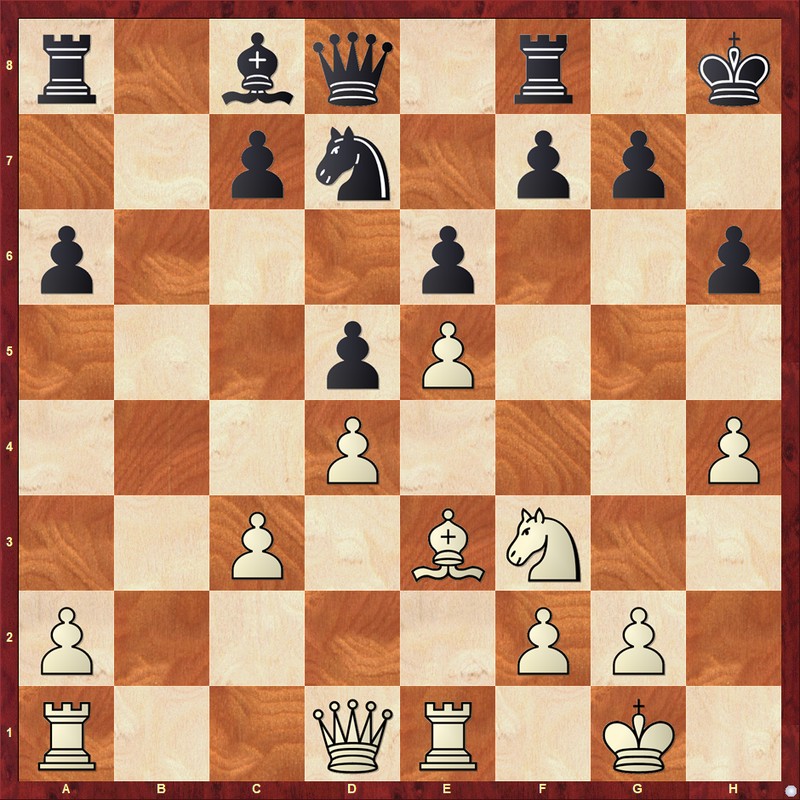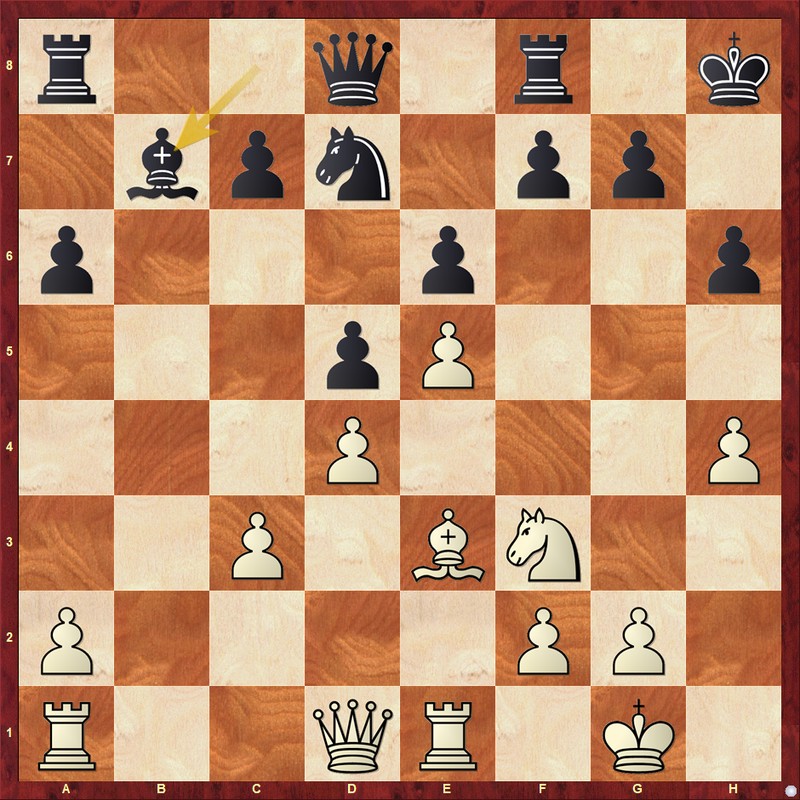
Typical mistakes Nr 2 - Not picking up forcing moves
This is the second post in a series of the most typical mistakes I encounter as a chess coach. I thought it might be useful to share these on this blog.This is another very common mistake I encounter almost daily in my coaching practice: during calculation, my students don’t notice all the forcing moves. That is, if I give them a position to calculate, and after a few minutes I ask them a simple question regarding forcing moves ( e.g. how many checks they have, or whether the opponent has any unprotected pieces), they just don’t know. They only start to look for it after hearing the question. And sometimes their answer is surprisingly wrong - for example, they say there are four checks in the position, when there are actually seven.
Ideally, when you look at a position, you should notice all the forcing moves more or less automatically and immediately; and while you are calculating lines, you should notice the new forcing moves as they become possible after each calculated moves.
For most people, this process does not quite work, though, and this has a huge negative impact on their calculation.
Let’s see the problem in a real example.

Let’s say that you have the position above in a tournament game. It is Black to move, and you are with White. While you are waiting for your opponent’s move, you are calculating, as usual. (You do have to habit to calculate in your opponent’s thinking time, right?)
You probably notice 1. Qd2 (which is a threat from the checks-captures-threats list), with the typical sacrifical idea of 2. Bxh6. You might even get excited about it, and start to wonder if Black can do anything against the sacrifice, as it looks crushing. Maybe Black is forced to play 1. - Kh7?
You are not sure what to do after that, but (hopefully) you notice that Kh7 will give you two new forcing moves: 2. Qd3+ and 2. Qc2+. Whether they are useful, we don’t know yet - but they are forcing moves, so we want to notice them all.
If you are like most people, you probably miss that there is another way to execute the same idea: you could also play 1. Qc1 to prepare the bishop sac on h6. Black is still forced to play 1. - Kh7, when we have a slightly different set of new forcing moves: 2. Qc2+ and 2. Qb1+.
Of course, 1. Qd2 looks more natural, as it connects the rooks, but at that stage we are not judging the moves yet - if 1. Qd2 is a threat, then so is 1. Qc1, and we should be aware of the possibility.
Now, let’s say that your opponent finally plays their move, and they come up with the horrible 1. - Bb7(??).

Ideally, you notice immediately that the bishop is an unprotected piece. As you know that unprotected pieces are perfect threat magnets, you start to look for ways to attack that bishop (that is, threats from the checks-captures-threats list), and you come up with 2. Rb1, which is also a sound developing move.
But if you are like most people, you fail to notice the other forcing moves, which are 2. Qb3 and 2. Qb1.
You are likely to miss 2. Qb3 because you are focusing on the sacrifice on h6, and subconciously reject the idea of moving the queen in the other direction; and you are likely to miss 2. Qb1 because it is simply an awful move. Who would think of trapping the a1-rook like that?!
But again, we want to collect all the forcing moves - and if you are following this closely, you must have noticed that this is the second time we put Qb1 on our list. Well, where did we see it first? Oh yeah, it was in the Qc1 line, when Black played Kh7, and we had Qb1 as a check...
And that is when you suddenly connect the dots, and notice that after 2. Qc1 Black cannot play 2. - Kh7 any more, as we can pick up the bishop with 3. Qb1 check. The two inferior-looking forcing moves (Qc1 and Qb1, which you must have added to your list with some disgust), suddenly make sense combined together.
I hope that example shows how crucial it is that you pick up all the forcing moves during calculation, and not only some of them. Otherwise your calculation will always be dodgy, and you will miss stuff that looks super obvious in retrospect.
How to improve your awareness of forcing moves
To be honest, I don’t think most strong players ever do a specific training for that - they just pick this up as a side effect of doing a lot of calculation exercises and playing a lot. Still, you can work on that skill if you solve challenging puzzles by going over methodically over the check, captures, and threats, in that order. It is boring, it is slow, but it definitely pays off on the long run.
I hope you have found that post useful. If you are looking for quality coaching to improve your game, you can check my availability by contacting me here or on hogata11@gmail.com, and we can arrange a free, non-committal video call to discuss your goals and get to know each other.
You may also like
 CM HGabor
CM HGaborTypical mistakes - Defending against unsound attacks
This is the first post in a series of the most typical mistakes I encounter as a chess coach. I thou… CM HGabor
CM HGaborHow titled players lie to you
This post is a word of warning for the average club player. As the chess world is becoming increasin… CM HGabor
CM HGaborDon’t drop your ideas like hot potatoes
This is just a quick post is about one of the most common mistakes chessplayers make when calculatin… CM HGabor
CM HGaborThe truth about checks-captures-threats
Probably the most common advice you hear in chess is that you should always look for forcing moves (… SayChessClassical
SayChessClassicalAre Online Chess Players Trapped Pigeons?
The Increasing Gamification of Online Chess CM HGabor
CM HGabor